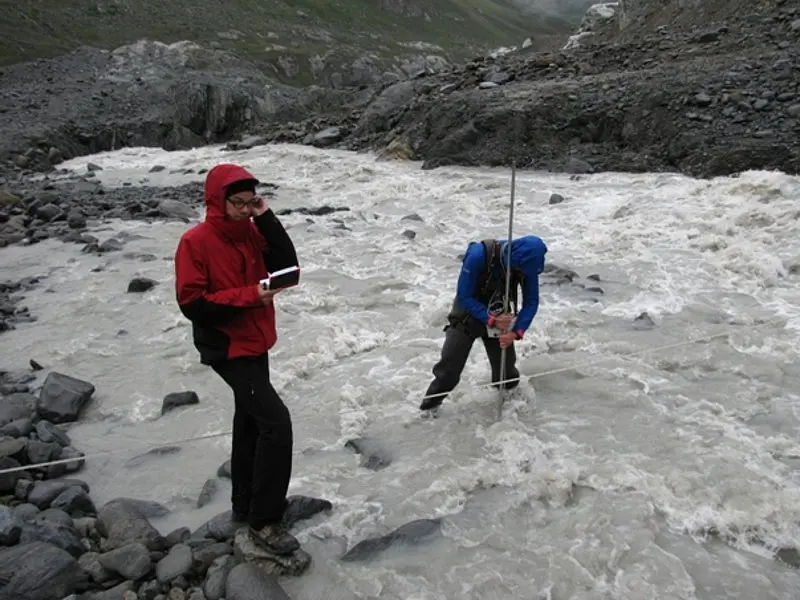SP3: Proglacial channel morphodynamics – Investigations of the fluvial sediment transport and of the channel mobility
The research in the sub-project is concentrated on the channel network of the investigation area. Sediment transport rates in the Fagge are of most interest here as they are an essential factor in the proglacial sediment budget. Also the effects of bed load resp. flooding events on the channel network are of importance.
Large parts of the sediment transported in the Fagge are transported by melt water from the glacial system of the Gepatschferner into the fluvial system. It seems, that, in the process, subglacial sources play a decisive, whereas supraglacial and englacial sources play a secondary role (see SP4).
The foci of ongoing work are measurements of the sediment transported out of the investigation area by the water (Fagge, Riffler Bach). For this purpose, discharge and bed load measurements are conducted at fixed transects at different water levels. Parallel, automatic water sampler (suspended load) and different sensors are being used. They serve for a logging of parameters like water level, turbidity, temperature and conductivity at 15 minute intervals.
As it is not possible to directly measure the bed load during the high summer melting period (due to high discharge) and a construction of physical structures is ruled out by ecological reasons, the Gepatsch reservoir and different intermediate storages (e.g. gravel bars) are surveyed along the course of the river by multi-temporal laser scans. The high resolution laser scanner data are also used to detect channel pattern changes and estimate surface roughness.
Also active and potentially active sediment sources (scree slopes, moraines, rock faces) are investigated in close cooperation with SP1 and SP2.

